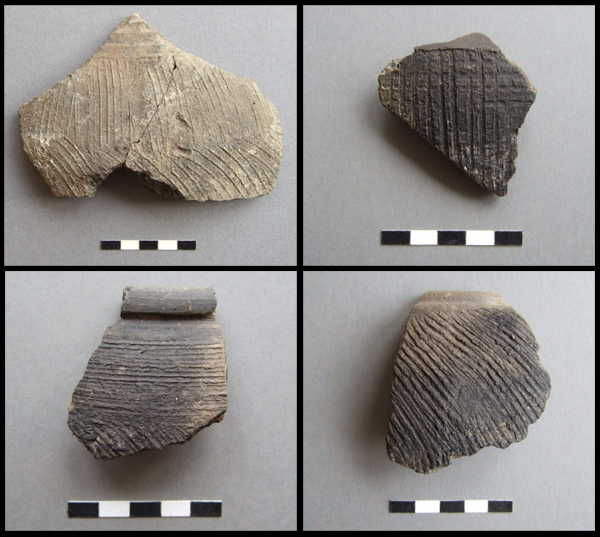
Category Archives: In the Store
VM_365 Day 222 All at sea – St Mildred’s Bay Bronze Hoard
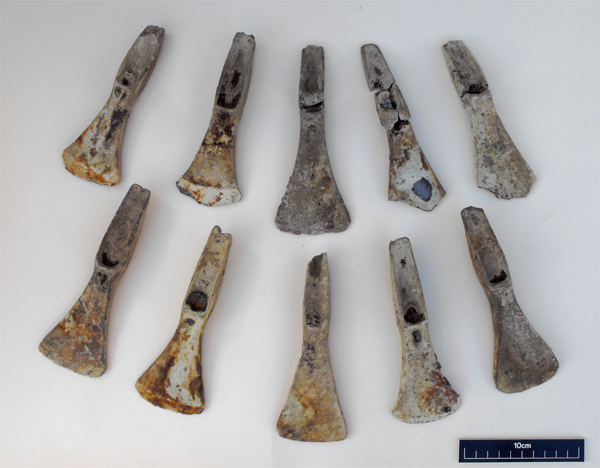
The image for Day 222 of the VM_365 project shows all of the the hoard of ten Early Bronze Age palstave axes that was found in 1988 on the wave cut shelf on the foreshore at St Mildred’s Bay.
The unusual pattern of corrosion on the surface of the axes is due to the sea-waterlogged deposit the bronzes were found in. A detailed image of one axe from this group (second from the right of the top row) was previously featured on Day 219.
The bronze hoard was excavated by Dr Dave Perkins, the first Director of the Trust for Thanet Archaeology, during an extensive survey of archaeological features that were revealed in 1988 after a storm had scoured the covering of sand from the chalk of the wave cut shelf.
Several truncated features were excavated and recorded,including pits ditches and a small remannat of preserved Brickearth geology. The archaeological survey preserved a small sample of the prehistoric settlement in the landscape that had been destroyed by the encroaching sea.
VM_365 Day 219 The toll of tide and time
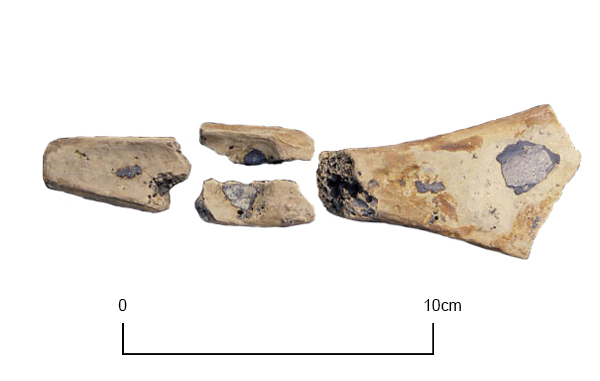 The image for Day 219 of the VM_365 project shows one of the bronze palstave axes that were found packed together in a hoard found at St Mildred’s Bay near Birchington. The conditions of the axe is very poor, the cast metal is crumbling and discoloured and it has broken into several pieces.
The image for Day 219 of the VM_365 project shows one of the bronze palstave axes that were found packed together in a hoard found at St Mildred’s Bay near Birchington. The conditions of the axe is very poor, the cast metal is crumbling and discoloured and it has broken into several pieces.
The wave cut shelf on the north coast of Thanet has been the site of the discovery of many truncated prehistoric and medieval pits, exposed as the tides cut down the chalk cliffs along the coastline. These archaeological features are known to be remnants of settlements that once occupied the rolling hill tops that occupied the surface of the land that was broken down by the sea.
The unique conditions of the preservation of the features below the sea and the sand of the foreshore has created a very different level of archaeological preservation than is generally found on the sites within Thanet’s present landmass. A woven timber pit lining preserved in one of the truncated pits at St Mildred’s Bay was shown in a previous post for VM_365 Day 65.
On the other hand, the saturation of the fills with sea water has taken a heavy toll on the bronzes that were discovered in one of the St Mildred’s Bay hoard. Unlike some of the stunningly well preserved bronze hoards that we have featured in previous VM_365 posts, the metal in the St Mildred’s Bay bronzes is decayed, discoloured and fragmented, a state that was particularly advanced in the palstave shown in today’s post.
VM_365 Day 214 Neolithic Serrated Flint blade from Margate
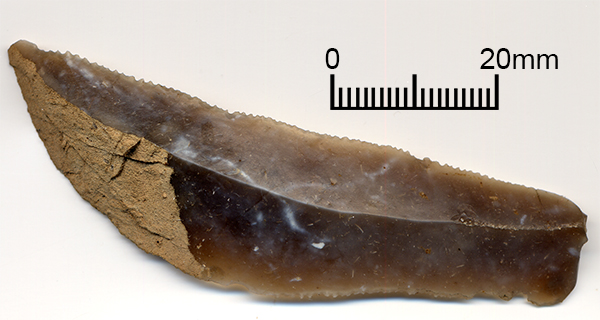
The VM_365 project’s image for Day 214 is a fine, serrated flint blade excavated from a pit dating to the Neolithic period on a site near Margate Railway Station in 2004.
The blade is fine, partly-worn and serrated along both edges with approximately 11 serrations per 10mm. The fine blade shows some wear indicating that it has seen some use. It has a break at the proximal-end which has removed the striking platform and crushing along the ridge of the blade along with a couple of notches taken out of one edge suggest that the blade had been hafted or mounted on a handle.
The fine serrations distributed so regularly along both edges of this blade attest to the skill and craft of the Neolithic flint worker.
VM_365 Day 212 Early Bronze Age Urn Conundrum
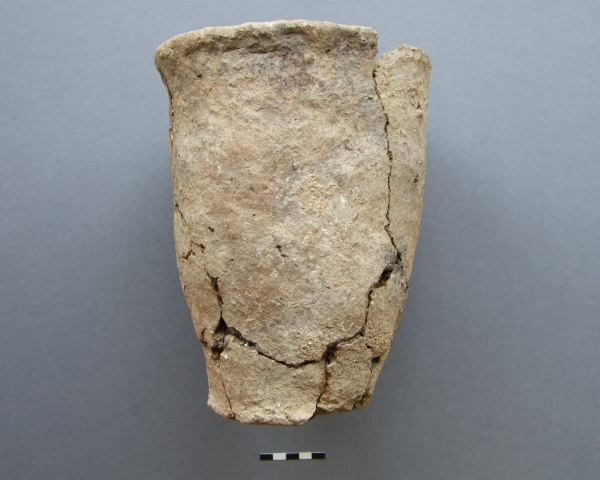
VM_365 Day 197 Fragments of Late Bronze Age Sword from Manston
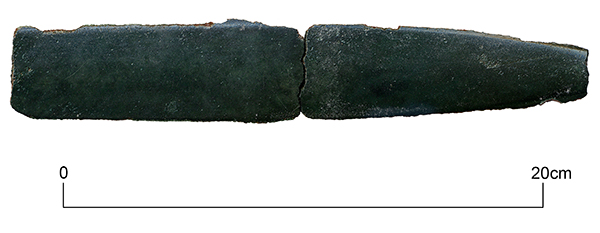
Today’s image for Day 197 of the VM_365 project shows two fragments from a sword blade found as part of a Late Bronze Age Bronze Hoard at Manston in 1994.
These two joining fragments of a leaf-shaped sword blade were found along with the narrow -bladed palstave axe and pegged spearhead shown in previous VM_365 posts. Traces of the ground edge of the sword can just be seen on both fragments.
VM_365 Day 185 Roman painted plaster inspired by nature
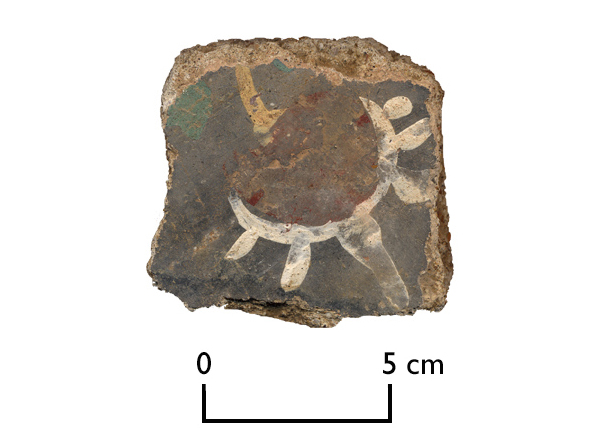
The image for Day 185 of the VM_365 project shows another fragment of painted wall plaster from the Roman villa at Minster. Fragments of painted plaster from the same site were featured on Day 178 and Day 182.
This fragment of decoration depicts a seed head or flower, painted on a dark grey background. The edge of the flower or seed head has been painted in white with a yellow stem. The internal part of the flower may have originally been painted the same colour as the stem with additional detail in dark red although the paint is now worn away. Green leaves, possibly extending from the stem can be seen on the edge of the fragment.
In contrast to the figurative painting of the Deer shown on Day 178 and the architectural emulation of marble shown in Day 182, this fragment shows an abstraction from nature where a natural object has been used to inspire a painted motif.
VM_365 Day 183 Repaired Roman Pottery
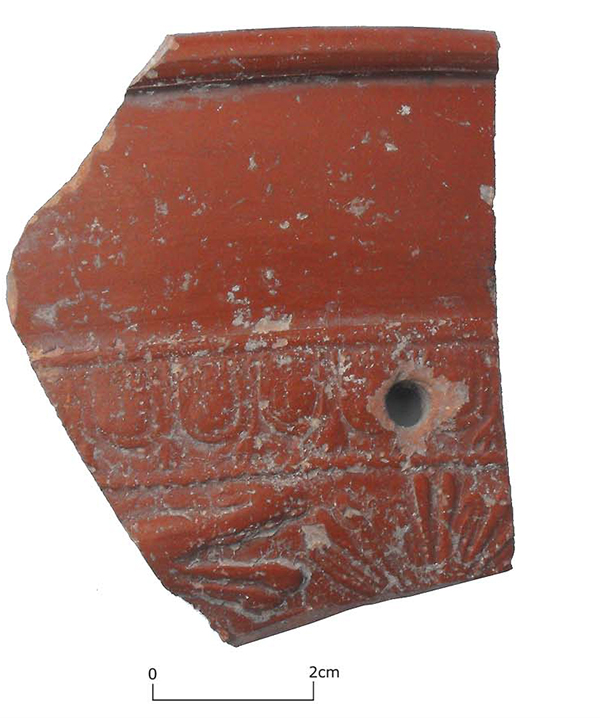
The VM_365 image for Day 183 shows a sherd of samian pottery from the excavations at the site of a Roman Buildings at Broadstairs which has had a hole drilled through it, so that the vessel could be repaired.
The sherd is from a first century Dragendorf 37 form bowl. made at the La Graufesenque workshops in Southern Gaul. The decoration on the bowl showed a bead border with a running animal motif, but it was poorly impressed.
The vessel must have been broken at some point and the area represented by the sherd in the picture was drilled through so that a lead rivets could be used to repair it. Lead wire was passed through two holes and either joined in a loop, or the ends may have been cut off and hammered flat on the inside of the bowl.
Other Roman pottery from this site has already featured in the VM_365 project.
VM_365 Day 181 13th century medieval pitcher from Manston
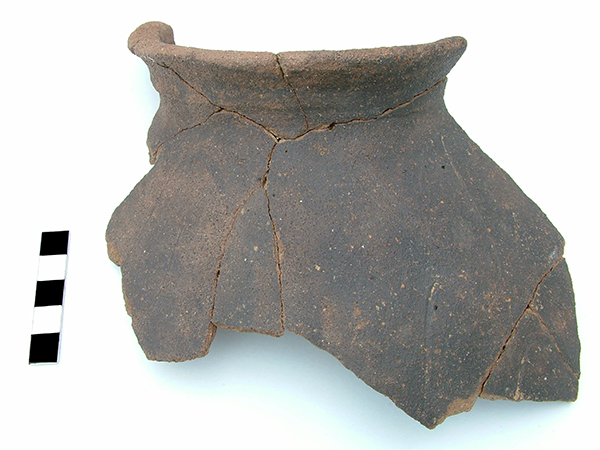
The image for Day 181 of VM_365 is of the near-complete profile of an Early Medieval pitcher in Canterbury sandy ware fabric. The surface of the pot is decorated with two or three broad incised horizontal wavy-line decoration which extends around the body.
The vessel is unglazed which is an indicator of its early date in the sequence of Canterbury sandy ware pitchers. The preferred dating for this vessel is 13th century, c.1125-1150/1175 AD. The pottery was excavated near Manston in Thanet in 2003.
VM_365 Day 178 The Running of the Deer
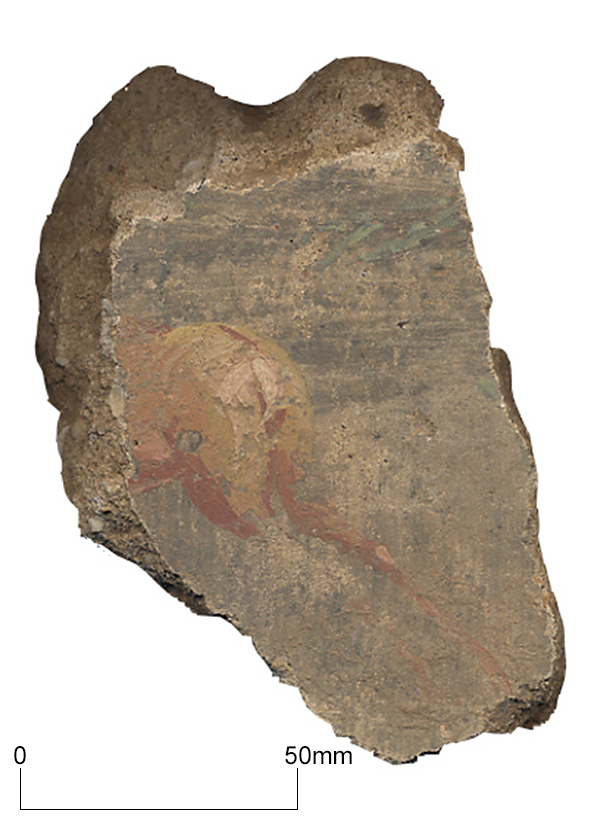
This is day one of a series of images from the Roman painted plaster collection from the villa at Minster.
Like many Roman villas excavated in Britain there was evidence that the buildings walls and ceilings had once been decorated with finely painted plaster which served a number of purposes. It allowed the rooms to be decorated with figurative representations of familiar scenes and allusions to literature and the natural world. It also allowed the more basic materials these buildings were constructed of, to be given the appearance of more expensive and exotic materials such as marble.
The majority of the fragments from the villa site are simply painted with solid colours forming backgrounds for decorative scenes and motifs. The fragments from the site demonstrate that many of the scenes were of very high quality.
Today’s image shows an example of one of the fragments of the very high quality decorative wall paintings depicting the hind quarters of a leaping deer which can be compared with an example from Stabiae, near Pompei.